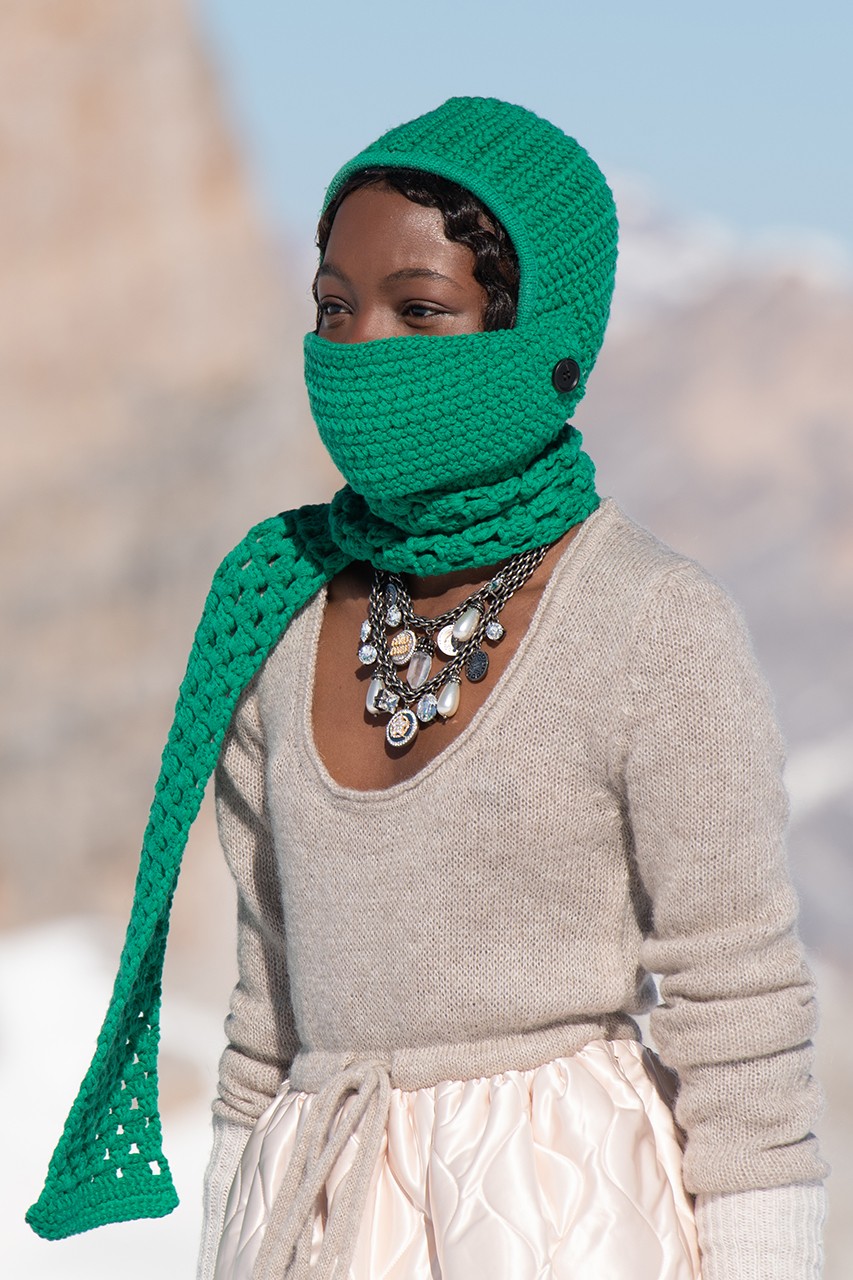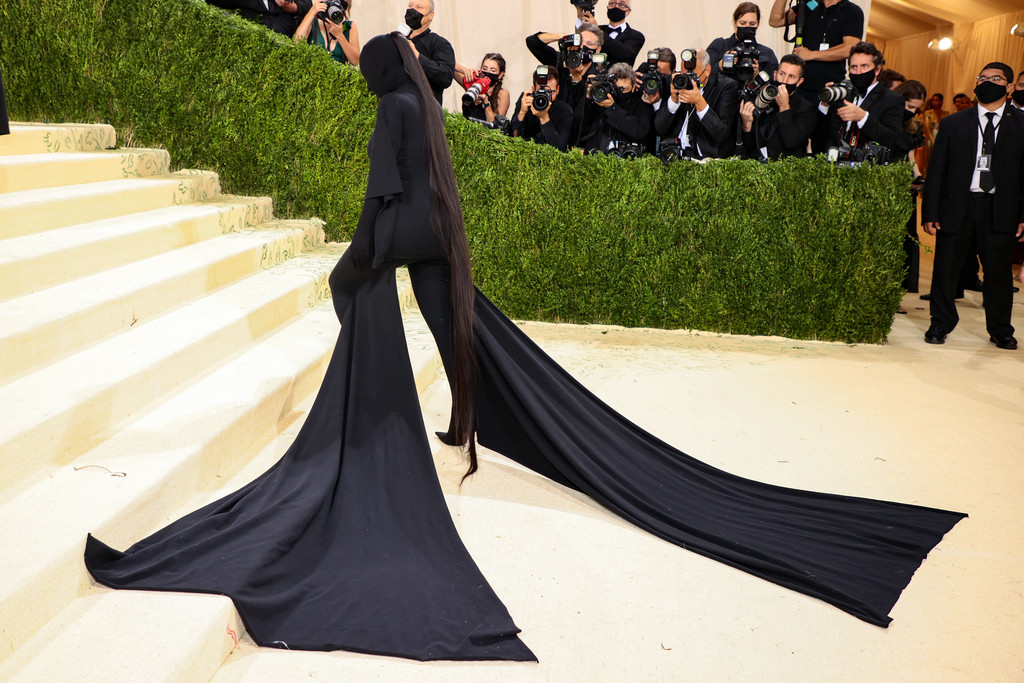Hate your face? Lucky for you, Balaclavas are in!
I jest – while you might hate your face, that is far from the only reason for the Balaclava to be your latest accessory. Case in point, the hordes of Mui Mui models christened ‘the Balaclava brigade’ who clogged Instagram’s explore page with the surprising head wear only a few weeks ago. With Justin Bieber sporting a ‘clava to church services, and brands from Weekday to Paloma Wool running their own versions, clearly the balaclava is cooler than its ever been. But how does a garment leave the realm of ski slopes and burglaries and enter that of high fashion?
Well, it’s more wearable, less bank-heist variations might have been a helping hand. While you’re free to join the ranks of celebrities going for a full-face covering, other options include the slightly more tame knitted hood and a 19th century throwback, the bonnet. Needless to say, covering half of your face also became slightly more universally acceptable when government mandated masks entered the scene.

But where did the balaclava buzz originate? The knitted head wear was first utilised by British troops during the Crimean war to protect them from the bitter cold. The Ukrainian port town of Balaclava gave the skin tight headpiece its name, and thus an era was born. Since then, eastern European militias adopted the balaclava for anti-surveillance reasons, cementing its military connotations.
The images of icy Baltic landscapes and militaristic fashion conjured by the balaclava are undoubtedly one reason for its popularity. The ‘Russian aesthetic’, which romanticises desolate post-USSR brutality and drove swathes of teenagers to buy amazon brand Ushankas, peaked in searches only last December. As of today, #Russia aesthetic’ boasts 4.5 million views on TikTok, and caused Belarusian band ‘Molchat Doma’ to blow up overnight. The Balaclava and its Slavic associations are certainly one accessorising option for the teenager longing for Moscow’s ennui sodden ambiance.
The other reason for the balaclava’s sudden success is also somewhat USSR adjacent: its ability to resist surveillance. As an anti-conformist symbol, the head wear offers a complete disguise of your identity – something that’s already been latched onto by decades of criminals and ne’er-do-wells. In 2022, the appeal has broadened to the celebrity class – Kanye West perhaps got the ball rolling here, adopting a balaclava in numerous public settings for months in order to lead the paps astray. Not one to be out of the loop, Kim Kardashian showed up to the 2021 Met Gala in a full Balenciaga body suit which disguised her from forehead to feet.

In the age of social media in which everyone has a camera on their person at all times, an accessory that offers a bit of respite is something we can all appreciate. The ever increasing balaclava shows that we’ve all taken the opportunity and run with it. There’s a certain tiny rebellion in stomping out into our day with no face attached, as well as the option to cover up unwashed hair.
Words by Kate Bowie




















